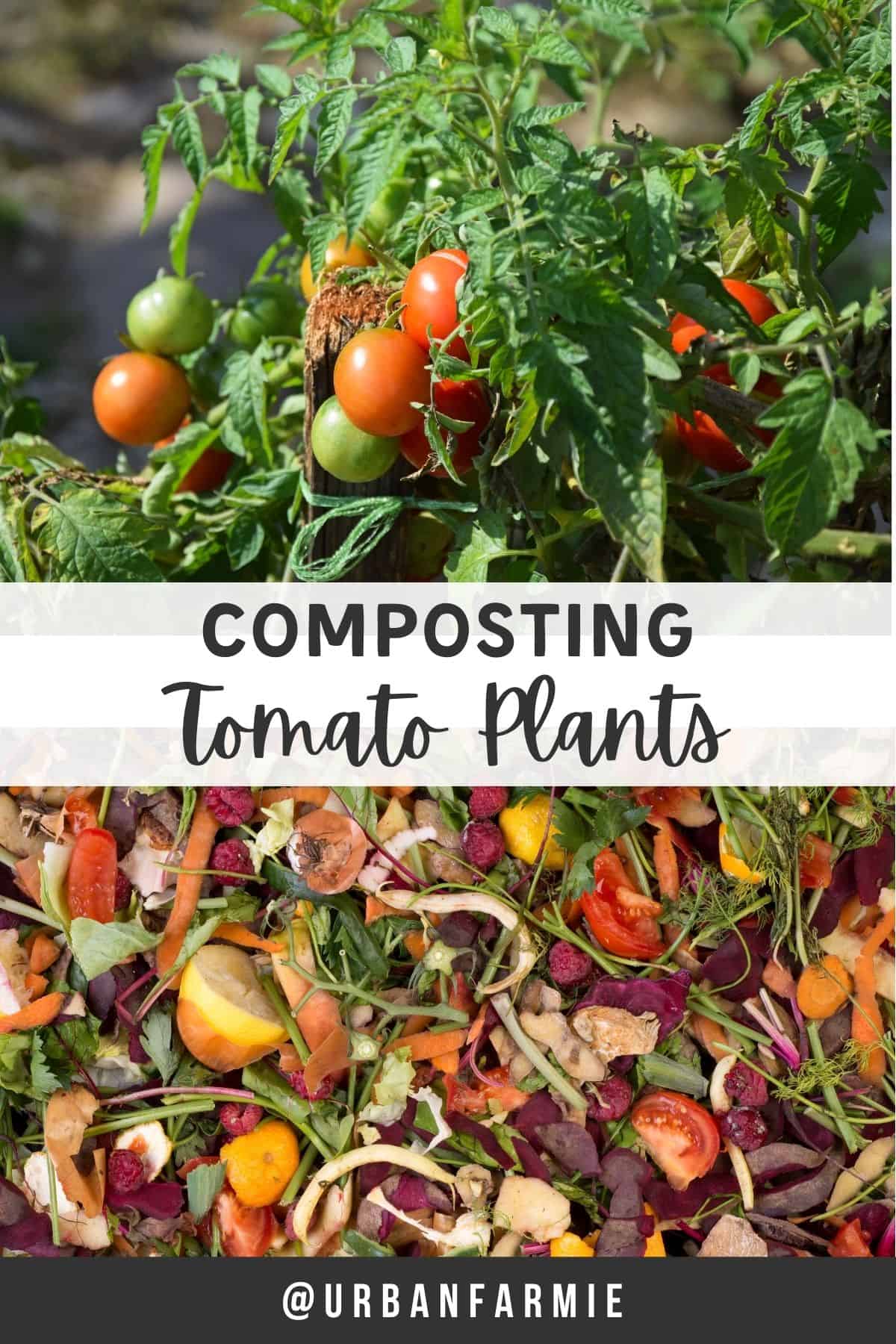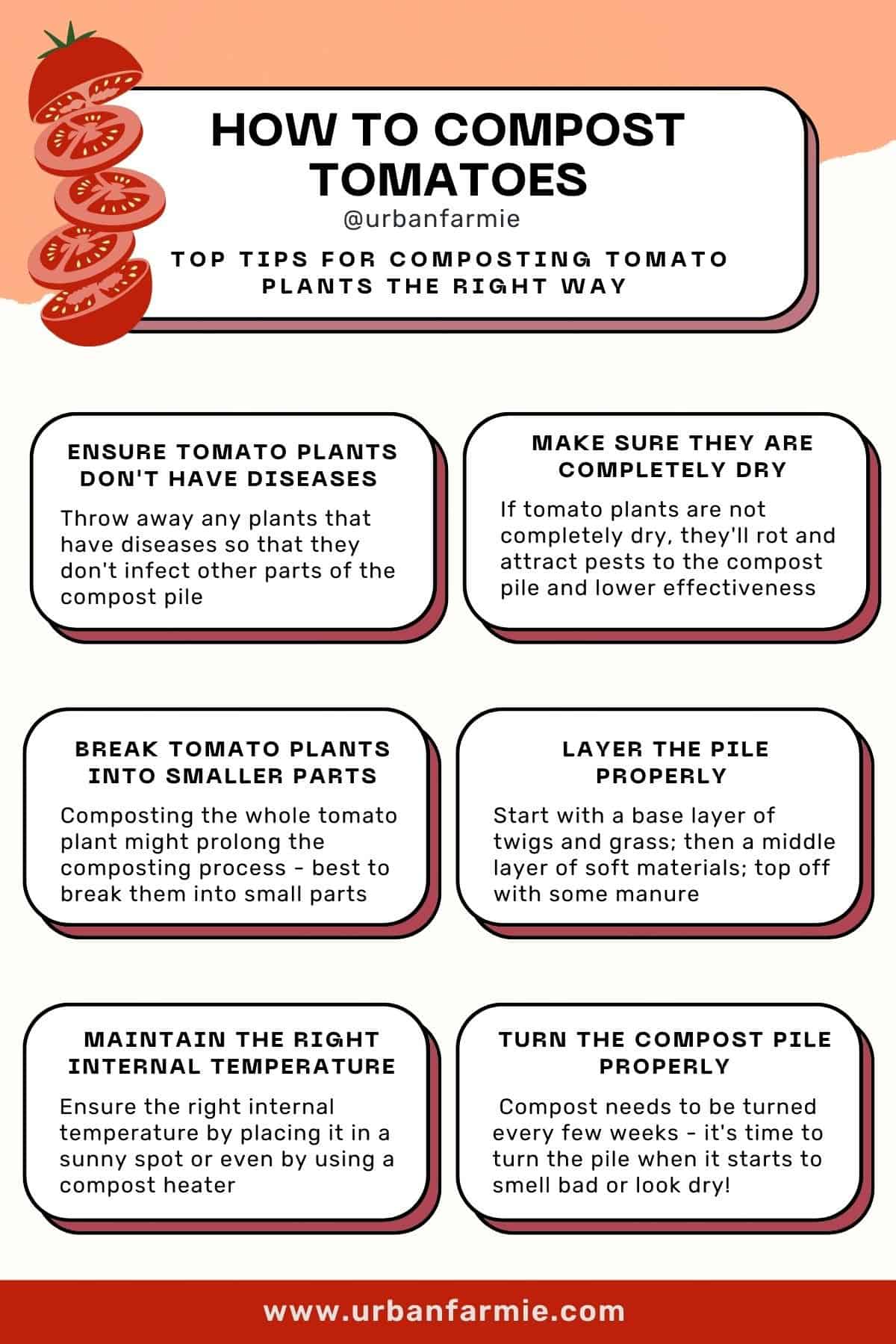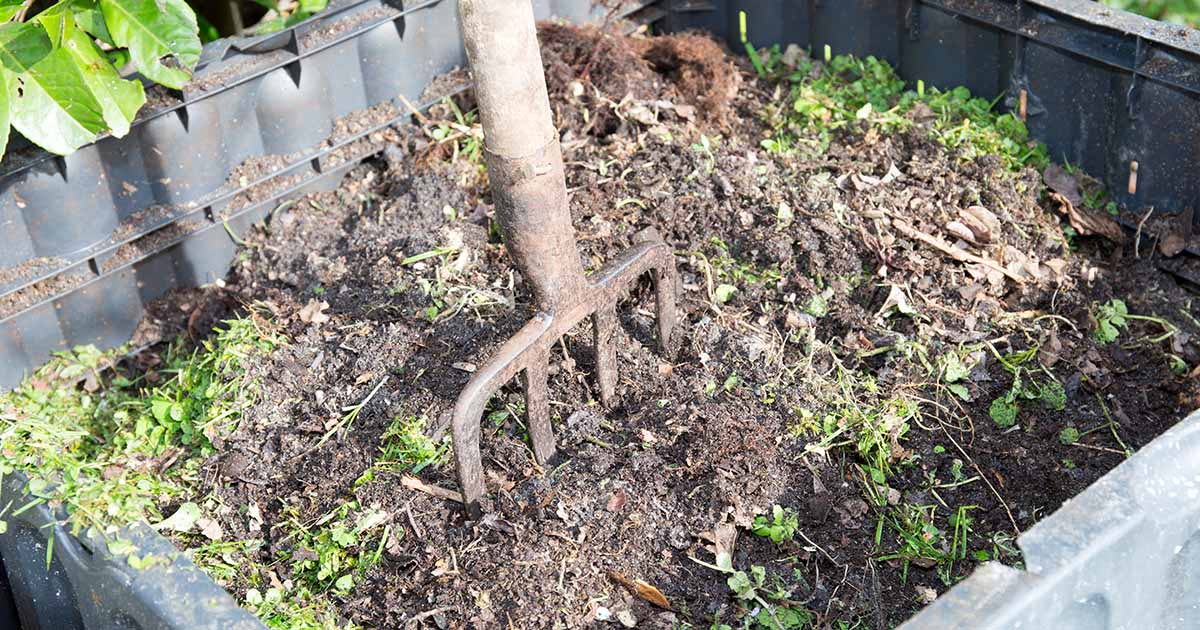Yes, you can compost tomato plants. Remove any diseased parts before adding them to your compost pile.
Tomato plants, like most organic matter, break down and enrich compost with valuable nutrients. Healthy tomato plants contribute nitrogen, potassium, and other essential elements to your compost. Remove any diseased or pest-infested parts to prevent spreading issues in your compost.
Chop the plants into smaller pieces to speed up decomposition. Mixing tomato plants with a variety of other compostable materials helps balance the carbon-to-nitrogen ratio. This balance ensures efficient composting and nutrient-rich compost. Regularly turning your compost pile aids in aeration and accelerates the breakdown process. Composting tomato plants is an eco-friendly way to recycle garden waste and enrich your soil.
Benefits Of Composting Tomato Plants
Composting tomato plants has numerous benefits for your garden and the environment. By recycling these plants, you can create a rich, nutrient-dense compost. This will help your garden thrive. Let’s explore the benefits of composting tomato plants.
Nutrient-rich Soil
Composting tomato plants creates nutrient-rich soil for your garden. Tomato plants contain essential nutrients like nitrogen, potassium, and phosphorus. These nutrients help other plants grow strong and healthy.
By adding composted tomato plants to your garden, you improve the soil structure. This means your garden soil will hold water better. It also helps air circulate around plant roots. Healthy soil leads to healthy plants.
Here are some benefits of nutrient-rich soil:
- Improved plant growth
- Better water retention
- Enhanced root development
Waste Reduction
Composting tomato plants helps reduce waste. Instead of throwing plants away, you recycle them. This keeps waste out of landfills.
Reducing waste is good for the environment. It lowers the amount of garbage we produce. Less waste means fewer landfills and a cleaner planet.
Here are some ways composting reduces waste:
- Reduces landfill waste
- Decreases greenhouse gas emissions
- Promotes sustainable gardening practices
Composting tomato plants is a simple way to help the environment. It also benefits your garden by creating nutrient-rich soil. Start composting your tomato plants today and enjoy a healthier garden.
Challenges In Composting Tomato Plants
Composting tomato plants can be tricky. They have unique challenges that require attention. These challenges include disease concerns and slow decomposition. Let’s dive into each of these issues.
Disease Concerns
Tomato plants often carry diseases. Common diseases include blight and wilt. These diseases can spread through compost. This can infect future garden plants. Use caution when composting tomato plants.
Remove any diseased parts. Dispose of them separately. This helps prevent disease spread. Sterilize your compost tools. Keep a close eye on your compost pile. This ensures it’s disease-free.
Slow Decomposition
Tomato plants decompose slowly. Their stems and vines are tough. This slows down the composting process. Shred the plants into smaller pieces. This speeds up decomposition.
Keep the compost pile moist. Turn it regularly. This ensures even decomposition. You can also add high-nitrogen materials. These include grass clippings or kitchen scraps. They help balance the compost pile.
| Challenge | Solution |
|---|---|
| Disease Concerns | Remove diseased parts, sterilize tools |
| Slow Decomposition | Shred plants, add high-nitrogen materials |
Pay attention to these challenges. Your compost will be healthier and more effective. Happy composting!
Identifying Healthy Tomato Plants
Tomato plants are a common addition to many gardens. Identifying healthy plants is important for composting. Healthy plants ensure nutrient-rich compost for your garden.
Signs Of Disease
Before composting, check for signs of disease. Diseased plants can harm your compost pile. Look for these symptoms:
- Yellowing leaves: This can indicate nutrient deficiency or disease.
- Spots on leaves: Spots may be black, brown, or yellow.
- Wilting: Plants that wilt despite watering may be sick.
- Mold or mildew: These fungi can spread in your compost.
Suitable Plant Parts
Not all parts of the tomato plant are ideal for composting. Here are the suitable parts:
| Plant Part | Suitability for Compost |
|---|---|
| Leaves | Yes, if healthy |
| Stems | Yes, if disease-free |
| Fruits | Yes, if not rotten |
| Roots | No, avoid composting roots |
By identifying healthy tomato plants, you can ensure a better compost pile. This helps create a nutrient-rich garden environment.
Preparation Before Composting
Before you start composting tomato plants, you need to prepare them properly. Proper preparation speeds up the composting process and ensures a healthy compost pile. This section will guide you through two key steps: Cleaning Plants and Chopping for Faster Breakdown.
Cleaning Plants
First, you need to clean your tomato plants. Remove all remaining fruits and flowers. These can attract pests and slow down the composting process. Next, check the plants for any signs of disease. Diseased plants can spread pathogens in your compost pile. Cut off and discard any infected parts. Healthy plants make the best compost.
Chopping For Faster Breakdown
Chopping your tomato plants into smaller pieces helps them break down faster. Use garden shears or a sharp knife. Smaller pieces have more surface area, which speeds up decomposition. You can cut the plants into 1-2 inch pieces. This size is ideal for quick composting. You can also use a garden shredder for larger quantities.
| Preparation Step | Action | Reason |
|---|---|---|
| Cleaning Plants | Remove fruits and flowers | Avoid pests and slow decomposition |
| Cleaning Plants | Check for disease | Prevent spreading pathogens |
| Chopping Plants | Cut into 1-2 inch pieces | Increase surface area for faster breakdown |
By following these steps, you ensure that your tomato plants decompose quickly and safely. This makes your compost pile more efficient and beneficial for your garden.
Balancing The Compost Pile
Balancing your compost pile is crucial for effective decomposition. It ensures nutrient-rich compost. Many wonder if they can compost tomato plants. The answer is yes! But balancing the compost pile is essential.
Green Vs. Brown Materials
Compost needs a balance of green and brown materials. Green materials are rich in nitrogen. Brown materials are rich in carbon.
- Green materials:
- Tomato plants
- Vegetable scraps
- Grass clippings
- Brown materials:
- Dried leaves
- Straw
- Cardboard
Mixing these materials is key. Too much green can make the pile smell. Too much brown slows down the composting process.
Maintaining Moisture
Keeping your compost moist is important. It helps break down materials. But too much water can cause problems.
| Signs | Action |
|---|---|
| Too dry | Add water |
| Too wet | Add brown materials |
Check the moisture regularly. The compost should feel like a damp sponge. This balance helps microbes work efficiently.

Credit: urbanfarmie.com
Speeding Up Decomposition
Composting tomato plants can be a rewarding way to recycle garden waste. Speeding up decomposition ensures you get rich compost faster. This process involves a few techniques that make it efficient.
Aeration Techniques
Proper aeration is crucial for fast decomposition. It helps beneficial microbes break down the plants.
- Turn the compost pile regularly.
- Use a pitchfork or compost aerator tool.
- Ensure the pile is not too wet or dry.
Good air flow keeps the microbes active. It also prevents bad smells from developing.
Using Compost Activators
Compost activators can speed up the breakdown of tomato plants. These are materials rich in nitrogen.
- Grass clippings
- Manure
- Kitchen scraps
Mix these activators into your compost pile. They provide essential nutrients for the microbes. This boosts their activity and speeds up decomposition.
Here is a simple table to show the benefits of each technique:
| Technique | Benefit |
|---|---|
| Aeration | Keeps microbes active, prevents bad smells |
| Compost Activators | Provides nutrients, boosts microbe activity |
Using these methods, you can turn your tomato plants into rich compost quickly.
Avoiding Common Mistakes
Composting tomato plants can be rewarding. Yet, common mistakes can hinder your efforts. This section covers how to avoid these pitfalls.
Overloading With Tomato Plants
Overloading your compost with tomato plants is a common mistake. Too many tomato plants can unbalance your compost. Ensure a good mix of green and brown materials.
Here is a simple table to help you balance your compost:
| Material Type | Examples |
|---|---|
| Green Materials | Tomato plants, grass clippings, vegetable scraps |
| Brown Materials | Dry leaves, straw, paper |
Mixing greens and browns helps create rich compost. Aim for a ratio of one part green to three parts brown.
Ignoring Pests
Ignoring pests in your compost can cause problems. Tomato plants may carry pests like aphids or tomato hornworms. These pests can spread in your compost pile.
- Inspect plants for pests before composting.
- Remove any visible pests to prevent infestations.
- Turn your compost regularly to deter pests.
By staying vigilant, you can keep your compost healthy. Happy composting!

Credit: urbanfarmie.com
Alternative Uses For Tomato Plants
Tomato plants are versatile and useful even after their growing season. Learn how to use them in different ways. Explore alternative uses for tomato plants to benefit your garden.
Mulching
Using tomato plants for mulching can enhance soil health. Chop up the plants and spread them over the soil. This helps retain moisture and keeps weeds at bay. Make sure the plants are disease-free before using them as mulch. Healthy mulch improves soil structure and adds nutrients.
Creating Liquid Fertilizer
Create a powerful liquid fertilizer from tomato plants. Cut the plants into small pieces and place them in a bucket. Fill the bucket with water and let it sit for a few weeks. Stir the mixture every few days. Strain the liquid and use it to water your garden. This homemade fertilizer is rich in nutrients. It helps plants grow strong and healthy.

Credit: gardenerspath.com
Frequently Asked Questions
Can You Compost Tomato Plants?
Yes, you can compost tomato plants. Ensure they are disease-free. Cut them into smaller pieces for faster decomposition.
What Parts Of Tomato Plants Can Be Composted?
You can compost all parts of tomato plants. This includes leaves, stems, and fruits. Avoid diseased parts.
Do Tomato Plants Add Nutrients To Compost?
Yes, tomato plants add nutrients to compost. They provide nitrogen and organic matter. This enriches the soil.
Should You Avoid Composting Diseased Tomato Plants?
Yes, avoid composting diseased tomato plants. They can spread pathogens. Dispose of them separately to prevent contamination.
Conclusion
Composting tomato plants is a great idea for your garden. They enrich the soil and reduce waste. Just ensure they’re disease-free before adding them to your compost. This simple practice benefits both your garden and the environment. Start composting your tomato plants today for a healthier garden tomorrow.
